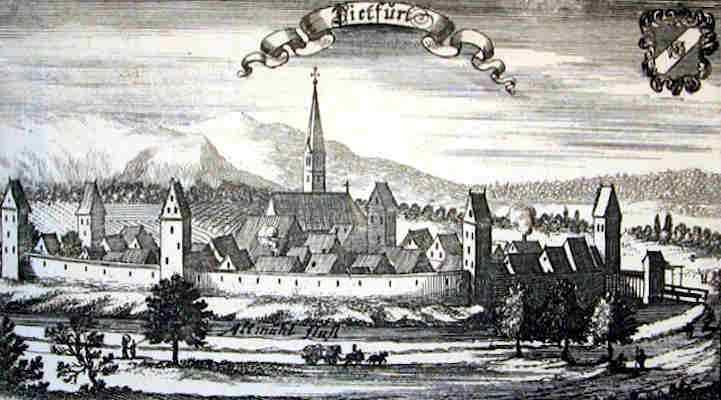
History
of the city of Dietfurt in the national park Altmuehl valley
Traces of settlements in prehistoric times have been found. There are prehistoric burial grounds and finds of the Hallstatt and the Celtic epoch.
The name Dietfurt was first mentioned in a document of A.D. 1109. In 1304 it is called a market town, in 1416 an autonomous town. The town walls and turrets of 1450 are partially preserved. The mighty Gogger Tower is distinctive sign of Dietfurt. When the family of the Counts of Hirschberg ![]() died out, Dietfurt became part of the Wittelsbach territory. It was a Bavarian frontier town near the boundary of the bishopric princedom of Eichstaett
died out, Dietfurt became part of the Wittelsbach territory. It was a Bavarian frontier town near the boundary of the bishopric princedom of Eichstaett ![]() . Its situation at the trade route from Nurernberg to Ratisbon favoured tradespeople and craftsmen, and for many generations the town was thriving.
. Its situation at the trade route from Nurernberg to Ratisbon favoured tradespeople and craftsmen, and for many generations the town was thriving.
The whole town presents many medieval views. In the middle of the town the main road widens and forms a market-place, where the town hall with its graduated gable-wall is the most remarkable building.
An independent parish was founded in 1540, a Franciscan monastery in 1660.
In the Thirty Years´ War, Dietfurt was plagued by immeasurable grief and hunger and death. In 1633 six Swedish companies occupied the town, and they relentlessly put the town to the sack. Later Imperial and Bavarian soldiers ransacked Dietfurt and the villages nearby.
In the War of the Spanish Succession, the Imperial Army attacked and ransacked and ravaged (in 1703). It took a long time until Dietfurt was able to recover from this blow. lt was in 1734 that the Dietfurters had enough means to afford the remodelling of their parish church in baroque style.
Until the beginning of the Second World War many Dietfurt townsmen were husbandmen; they had some small fields and a workshop.
After the War there was a thoroughgoing change in structure. Industrial development prevailed. Peasants gave up farming, sought jobs in factories, and leased their fields or they just tilled the land in their spare time. Tourism began to flourish in the 1960s.
back to the Homepage of the town Dietfurt ![]()
Zuletzt aktualisiert am 10.02.2017